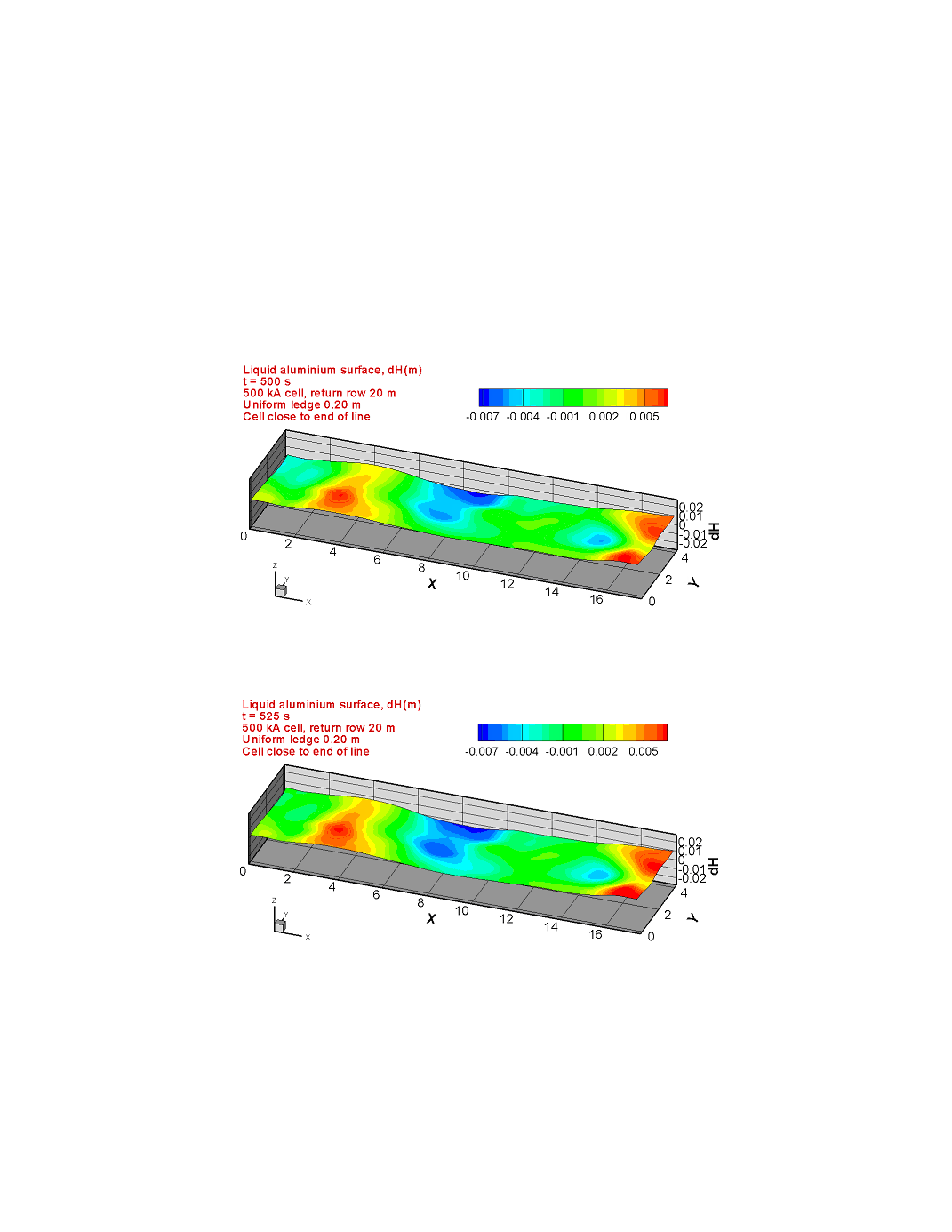
surface at time moments separated by a half-period of the oscillation: max and min height
for a particular location). Notice, that the maximum amplitude is just a few millimeters, and
that relatively intense horizontal circulation velocities are mainly responsible for the
interface deformation in this case. Figures 7 and 8 show the depth-average velocity
distribution in both liquid layers. The `dips' in the interface are created by the more intense
bottom layer vortex velocities (the right and middle parts), and the `crest' of the surface is
largely supported by the pressure reduction owing to the more intense electrolyte vortex on
the left part.
Figure 5 Liquid metal pad instantaneous surface at 500 s for the standard case without
Figure 6 Liquid metal pad instantaneous surface at 525 s for the standard case without